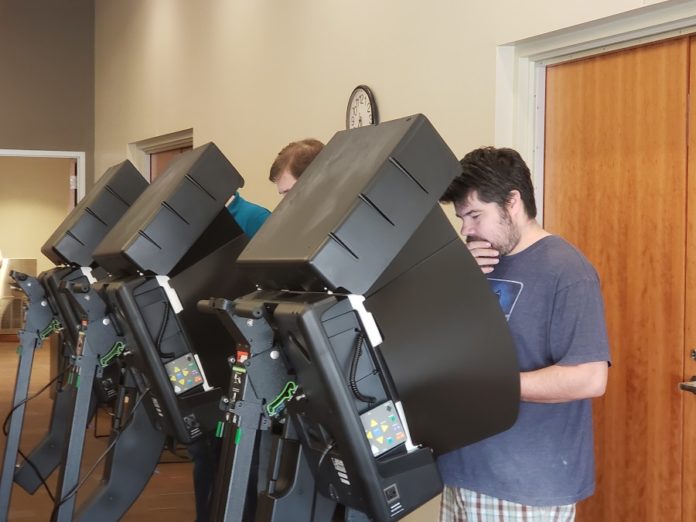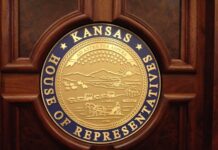Gov. Jeff Colyer and Secretary of State Kris Kobach may be headed for a recount as their race for the Republican gubernatorial nomination increasingly tightens.

But how much good will a recount really do for the losing candidate? History doesn’t offer an optimistic picture. In fact, the odds run steep against reversing an election. And in the cases where it did, it can take months before it’s finally resolved.
Consider that there have only been 27 recounts out of 4,687 general elections from 2000 to 2015, according to FairVote, a nonprofit group based outside of Washington, D.C. that studies elections and promotes electoral reform such as eliminating the Electoral College.
FairVote studied recounts that included eight ballot measures, three U.S. Senate races, two gubernatorial races, six judicial races, two attorney general races and one statewide presidential vote in Florida. Here’s a spreadsheet of the group’s work.

Only three recounts – Minnesota’s 2008 U.S. Senate race, Vermont’s 2006 state auditor race and the state of Washington’s 2004 gubernatorial race – led to an election being reversed, according the group’s November 2016 report.
FairVote’s researchers found that statewide recounts resulted in an average swing of 282 votes between the front-runners, representing just 0.0191 percent of the statewide vote in those elections.
As of right now, Kobach leads Colyer by 110 votes, well within the parameters of FairVote’s findings.
FairVote makes this observation about recounts: An extremely close margin of victory is needed to reverse the outcome of the initial count – something that Kobach or Colyer could pin their hopes to when considering a recount.
In the three overturned recounts – Minnesota, Washington and Vermont – the average of the initial margin of victory was 0.027 percent, FairVote reported.
The largest swing occurred in the 2006 Vermont auditor’s race where the votes shifted from a 0.06 percent margin of victory to 0.11 percent for the winner, the study found.
Another reason for optimism for Colyer and Kobach is that the study found that bigger swings occur in recounts with fewer voters than in recounts with large numbers of voters.
In seven instances where there were more than 2 million ballots cast, the margin shifted on average 0.016 percent, the study reported.
In eight other cases where there were fewer than 1 million ballots cast, the results changed by 0.039 percent. In the case of the Kansas GOP gubernatorial primary, only 313,000 ballots were cast, giving a losing candidate more hope for a reversal.
Researchers also reported that the vote gains during a recount are typically negligible. They found that in 12 of the recounts, the margin between the winner and the loser decreased slightly after the recount and in 15 it increased slightly.
On average, the FairVote study found that losing candidates’ votes were more affected in a recount. It reported that their vote total was affected by 0.122 percent compared to the winners whose total was affected by 0.116 percent.
“These low percentages underscore recounts’ small impact on voter margins,” the authors wrote.
Now, here’s a look at some of the rare cases where an election was overturned.

Minnesota U.S. Senate race, 2008: This recount put Democratic comedian Al Franken into public office. Franken started the recount 215 votes behind Republican incumbent Norm Coleman – or by a margin of just 0.009 percent of 2.9 million votes cast.
After a recount that lasted several months, Franken came out ahead with a 312-vote lead. The case wasn’t finally decided until June 2009 when the Minnesota Supreme Court found in Franken’s favor and Coleman conceded. It was one of the longest Senate races in American history.

Washington governor’s race 2004: Republican former state Sen. Dino Rossi emerged on election night as the 261-vote leader over Democratic Attorney General Christine Gregoire out of about 3 million ballots cast.
After several recounts and a protracted court battle, Gregoire prevailed with a 129-vote margin of victory. At the time, the race was considered the closest governor’s race in the country’s history.
Vermont state auditor race, 2006: Republican incumbent Randy Brock won this race by 137 votes. After a recount, Democratic challenger Thomas Salmon came out ahead by 102 votes, or a margin of 0.046 percent. It turned out that some of Salmon’s votes had been given to another candidate on the first count. It was the first time a recount had overturned a statewide election.
One last recount for you to consider, this one from the 1970s in New Hampshire.

New Hampshire U.S. Senate race 1974: Republican Louis Wyman led Democrat John Durkin by 355 votes on Election Day in a dispute that would span almost a year and end up being litigated by the U.S. Senate.
Durkin immediately demanded a recount that gave him a 10-vote victory. Wyman then asked for a recount that gave him a two-vote win.
Durkin then asked the U.S. Senate to resolve the dispute and after several months it couldn’t settle the matter. Durkin and Wyman eventually agreed to a new election in September 1975 that Durkin won by 27,000 votes.
















